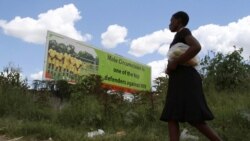The United States, which provides over $95 million to HIV and AIDS funding to Zimbabwe through the President’s Emergency Plan for AIDS Relief, or PEPFAR, is refocusing its support to areas and populations with the highest burden of disease, a senior U.S. Embassy official in Harare said on October 27th. PEPFAR is committed, globally, to go where the virus is—targeting interventions for populations at greatest risk in areas of greatest HIV incidence.
“PEPFAR resources remain substantial at “$128.7 million including additional funding for DREAMS, an ambitious partnership to reduce HIV infections among adolescent girls and young women, and Voluntary Medical Male Circumcision scale-up, but are insufficient to meet the growing demand for treatment and other services,” said Robert Scott, Deputy Chief of Mission at the U.S. Embassy. “In line with UNAIDS “Fast Track Strategy,” allocation of resources will focus on achieving the greatest impact to reach epidemic control in a short space of time.”
Scott was speaking a Health Policy Dialogue session organized by the Southern African Political and Economic Series (SAPES). The meeting brought together representatives of government, the private sector; development partners and civil society organizations.
Scott said PEPFAR resources will be concentrated in 36 scale-up districts and 541 sites requiring intensive support and will focus efforts on populations with the highest numbers of new infections and people living with HIV. He said efforts to sustain key care and treatment activities in 53 high volume sites across the entire country will continue.
Target populations, he said, were identified based on the UNAIDS hotspot mapping, Demographic Health Survey and program data. High risk and vulnerable populations include sex workers, adolescent girls and young women, as well as individuals living in mining areas, growth points, and areas with migrant workers, among others.
Since 2006, PEPFAR has provided over US$650 million to Zimbabwe. As a direct result of this continuous support, by the end of 2014, 160,000 people were on antiretroviral therapy and receiving related HIV services and care.
The policy dialogue session was held to facilitate dialogue among stakeholders involved in health services delivery in Zimbabwe and covered a number of key policy issues including health financing and insurance, coordination and human resources retention.
The U.S. is proud to work with Zimbabwe’s health ministry and multilateral organizations in the development and implementation of a health strategy that meets the needs of the people of Zimbabwe.














